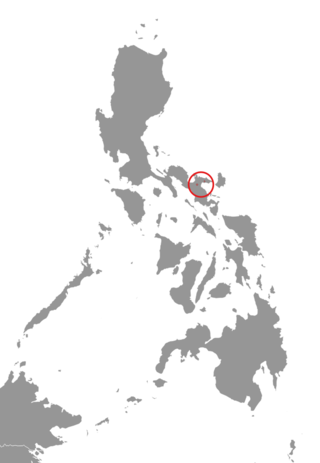
The Old World rats and mice, part of the subfamily Murinae in the family Muridae, comprise at least 519 species. Members of this subfamily are called murines. In terms of species richness, this subfamily is larger than all mammal families except the Cricetidae and Muridae, and is larger than all mammal orders except the bats and the remainder of the rodents.
Sommer's Sulawesi rat is a species of rodent in the family Muridae from Sulawesi. It is the only species in the genus Sommeromys and was described by Musser & Durden in 2002.

The shrewlike rats, genus Rhynchomys, also known as the tweezer-beaked rats are a group of unusual Old World rats found only on the island of Luzon in the Philippines. They look a great deal like shrews and are an example of convergent evolution. Shrewlike rats evolved to be vermivores and insectivores feeding on soft-bodied invertebrates associated with leaf litter.

The blazed Luzon shrew rat is a species of rodent in the family Muridae, endemic to the Philippines.

The Isarog striped shrew-rat or Mount Isarog striped rat is a species of rodent in the family Muridae found only in the Philippines.
The Celebes shrew-rat is a species of rodent in the family Muridae. It is found only in Sulawesi, Indonesia. Its natural habitat is subtropical or tropical dry forests. It is threatened by habitat loss.

Crunomys is a genus of rodent in the family Muridae native to the Philippines and Sulawesi. It contains the following species:

The Northern Luzon shrew-rat is a species of rodent in the family Muridae. It is found only in the Philippines. Its natural habitat is subtropical or tropical dry forest. It is threatened by habitat loss.
The Sulawesian shrew rat is a species of rodent in the family Muridae. It is the only species in the genus Melasmothrix. It is found only in central Sulawesi, Indonesia, and is known from the localities of Rano Rano and Mount Nokilalaki.
The Sulawesi giant rat is a species of rodent in the family Muridae. It is monotypic in the genus Paruromys. The species is endemic to Sulawesi in Indonesia, where it inhabits forests at elevations from sea level to the tree line. It is frugivorous and semiarboreal. While not currently listed as threatened, it is impacted by both habitat destruction and subsistence hunting.
The opossum rat is a species of rodent in the family Muridae. It is found only in northern and central Sulawesi, Indonesia.

The Himalayan field rat, sometimes known as the white-footed Indo-Chinese rat, is a species of rodent in the family Muridae. It has a wide range, being found in India, Bangladesh, Nepal, Bhutan, China, Myanmar, Laos, Thailand, and Vietnam, with introduced populations in Indonesia (widely), Palau, and the Philippines. A common species, the International Union for Conservation of Nature has assessed its conservation status as being of "least concern".

The Isarog shrew-rat or Mount Isarog shrew-rat is a species of rodent in the family Muridae. It is found only in the Philippines.

The Mount Data shrew-rat is a species of rodent in the family Muridae. It is found only in the Philippines.

The long-tailed shrew rat is a species of rodent in the family Muridae. It is found only in Central Sulawesi, Indonesia, where it is known only from Mount Nokilalaki in Sigi Regency.

Tate's shrew rat is a species of rodent in the family Muridae. It is found only in central Sulawesi, Indonesia, where it has been recorded on Mount Latimodjong, Mount Tokala, and Mount Nokilalaki. The species is named after American zoologist George Henry Hamilton Tate.
German's one-toothed moss mouse is a species of rodent in the family Muridae which occurs in the mountains of southeastern New Guinea.
A shrew rat or shrew-rat is not a true rat but a rodent that resembles a shrew in physical form and, presumably, lifestyle. There are twelve known species distributed across seven known genera, all from island southeast Asia, specifically the Indonesian island of Sulawesi and several islands of the Philippines:
Guy Graham Musser was an American zoologist. His main research was in the field of the rodent subfamily Murinae, in which he has described many new species.

Paucidentomys is a genus of rodents of a type commonly known as shrew-rats which was discovered in 2012 in a remote rainforest on the Indonesian island, Sulawesi. The genus is monotypic, consisting of the species Paucidentomys vermidax, or the edented Sulawesi rat. The Latin name may also be translated to its other common name "few-toothed worm-eating rat", referring to the fact that they have only two teeth and may live exclusively on a diet of earthworms.









